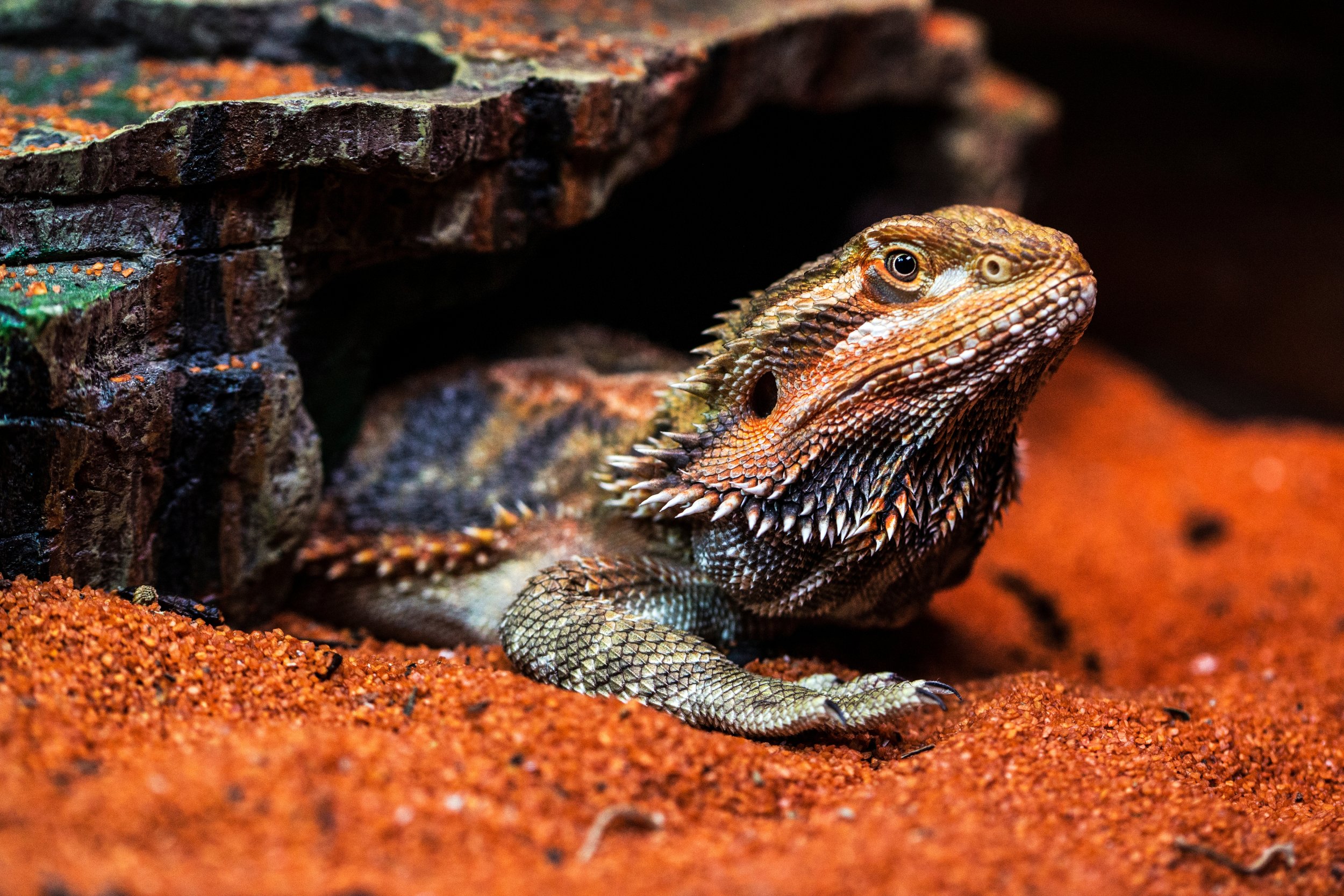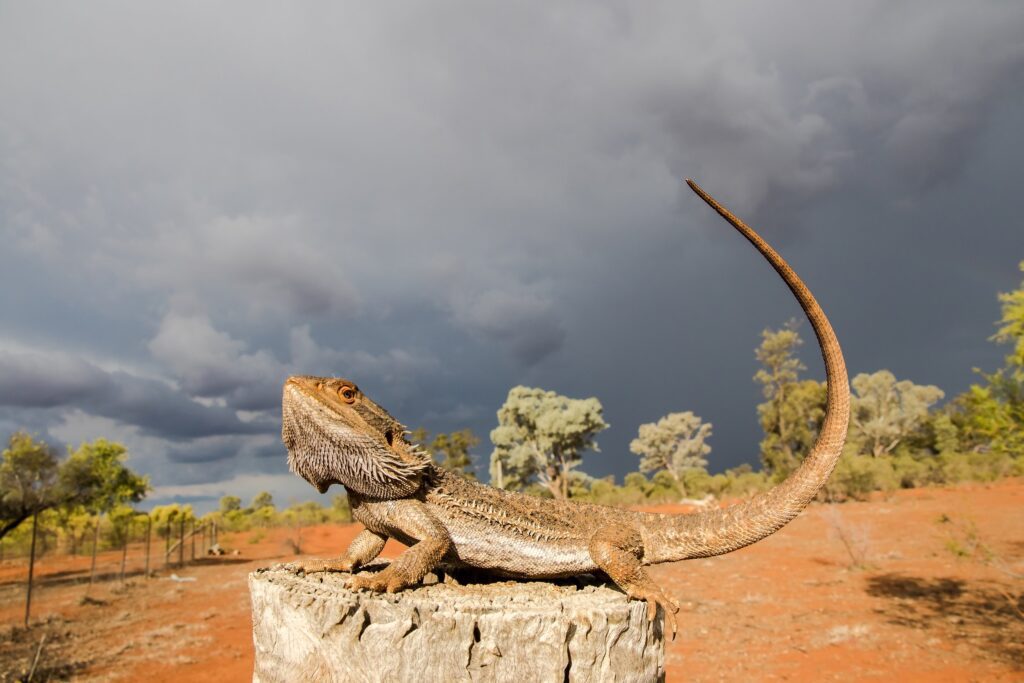According to our survey, the bearded dragon is the most popular pet reptile in the UK, but major breakthroughs in field research are readdressing how we should keep these much-loved lizards.
There are eight different species of bearded dragon, all belonging to the Pogona genus. Two of these species have established themselves incredibly well in the pet trade for different reasons. P. vitticeps is impressively large, whereas P. henrylawsoni, or the ‘rankins dragon’ is manageably small. Both species are considered ‘easy to care for’ and do exceptionally well in captivity.
Despite being so popular in the US and European pet trade, Australian field researcher and veterinarian, Dr Jonathon Howard (Beardie Vet) suggests we still have a long way to go before top-class husbandry becomes the ‘norm’.
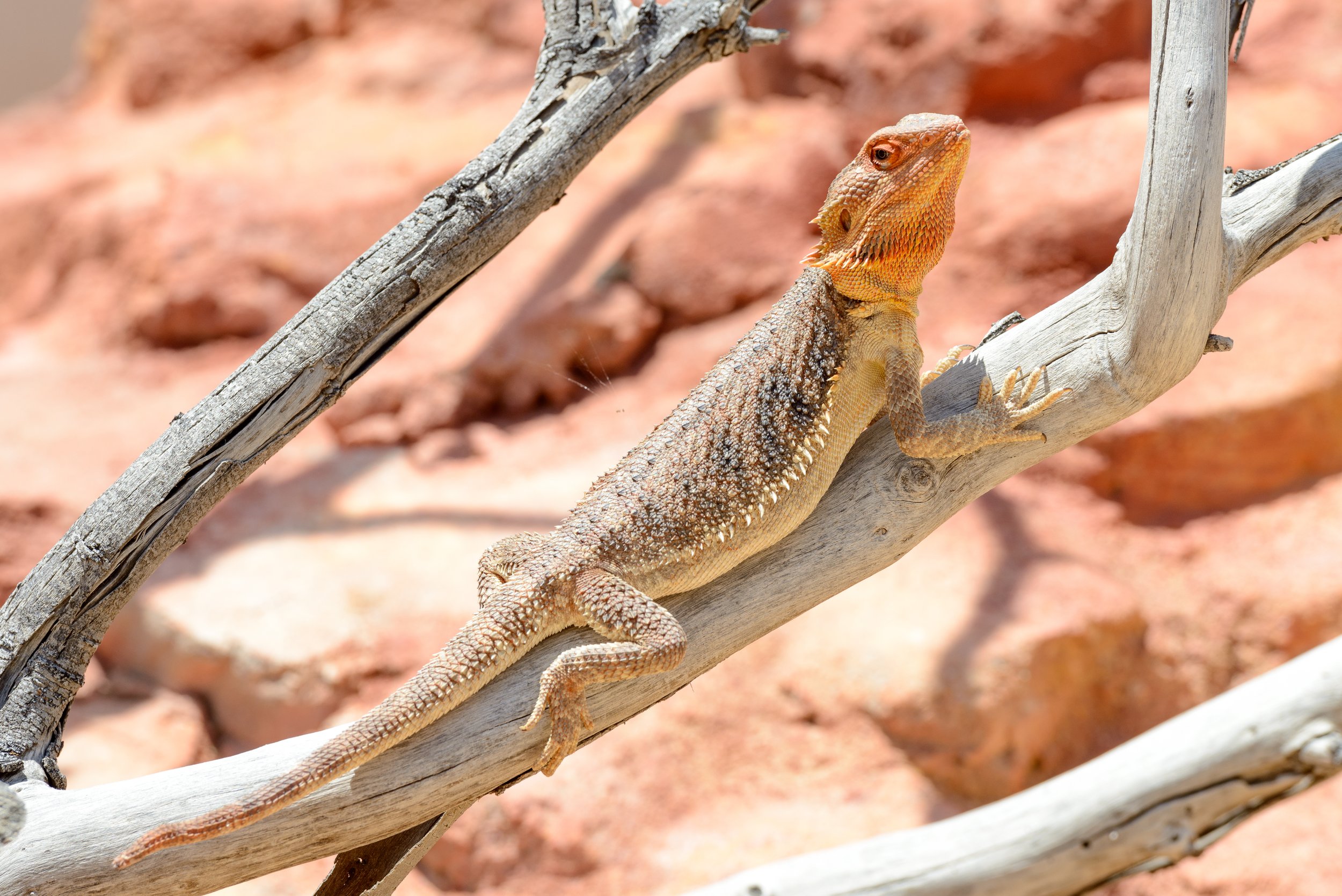
History in the pet trade
Due to the geological significance of Australia, over 90% of the country’s reptile and amphibian species are found nowhere else in the world. This ecological fragility led Australian Government to enforce a ban on importing and exporting all flora and fauna. Experienced keepers will understand the implications of the ban to the international pet trade and whether celebrated or condemned, the restrictions have successfully limited the export of many species.
With the Australian ban on exports coming to fruition in the 1960s and major scale breeding of P. vitticeps only gaining traction in the 90’s, understanding how the ‘beardie’ became the nation’s best loved reptile is complex and unfortunately, rooted in smuggling.
According to Ray Hoser, Australian herpetologist and author of Smuggled and Smuggled 2, most illegal exports happened between 1974 and 1990. Wild animals would arrive in Europe, usually the Netherlands or Germany before being dispersed legally across the planet. The initial wave of demand is thought to have been influenced by commercial campaigns, with a particular TV advert showing bearded dragons and frilled lizards in Japan, increasing demand overnight. Luckily, it wasn’t long after the first exports of bearded dragons began breeding successfully and prolifically, putting an end to the unscrupulous side of the market.
The ban on exporting wildlife also limits the keeping of Australian species within Australia, which requires a permit in most states. This means that their popularity in the Aussie pet trade pales in comparison to US and European industries and has developed an entirely different, research-lead market.
Due to the bearded dragon’s success in captivity and hardy demeanour, captive research was often based around keeping the dragons healthy and promoting successful breeding. Both of these were considered indicators of good husbandry, but recent research suggests that much of the problems encountered in captivity were a result of keepers straying too far from wild conditions.
Beardie Vet
Dr Jonathon Howard is an exotic pet veterinarian from New South Wales, Australia. After a lengthy career as a vet and being appointed president of the Australian Herpetological Society, Jonathon turned his attention to researching central bearded dragons in the wild. From here, he created the ‘Beardie Vet’ facebook page, bringing cutting edge field research to international pet owners in a bid to improve husbandry across the globe.
Dr Howard explained “It really came about as a kid capturing wild animals, blue tongues, snakes etc. Then when I figured out what I wanted to do in life, I became a vet. It wasn’t until then that I began doing herping field trips. I did one placement with the vet school, out west in New South Wales in a place called Bourke. In Australia we even say ‘the back of Bourke’ when something is that remote, it’s really far out West and scorching hot. Yet, in one spring we saw over 40 bearded dragons out in the hot dry sand. After keeping bearded dragons in the 90s myself, it was crazy to think how people were still keeping these as pets.”
Natural habitats
The central bearded dragon inhabits arid and semi-arid habitats throughout central and South Australia. These environments always contain some level of vegetation for the animals to perch and bask on as the central bearded dragon is semi-arboreal. Conventional vivariums should ensure some height to provide adequate climbing space required by these lizards. The Australian Museum recorded an individual P. vitticeps perched in a tree, 3m above the ground, for a period of three weeks.
Natural substrate is also important to providing the environmental enrichment that bearded dragons need. Dr Howard explains “When you go to these places where the bearded dragons live, it’s 96% sand. Wild dragons will dig from time to time and you still see people using carpets and newspaper as substrates. It is down to our husbandry that’s causing issues [with impaction].”
Impaction is a term used for when captive animals will consume their substrate, often leading to serious health complications. Developing research is starting to draw a correlation between vitamin D3 absorption and impaction. There are multiple requirements for an animal to convert minerals and calcium into vitamin D3 successfully, with the most prominent being correct exposure to UVB.
Impaction is not the only issue though. General behaviour and health are affected significantly in captivity where dragons are unable to dig and forage, as they would in the wild. They may do this for hunting, egg laying or to regulate their temperature and absorb moisture. It’s important we consider how to replicate these behaviours as best as possible in captivity for mental health and well-being.
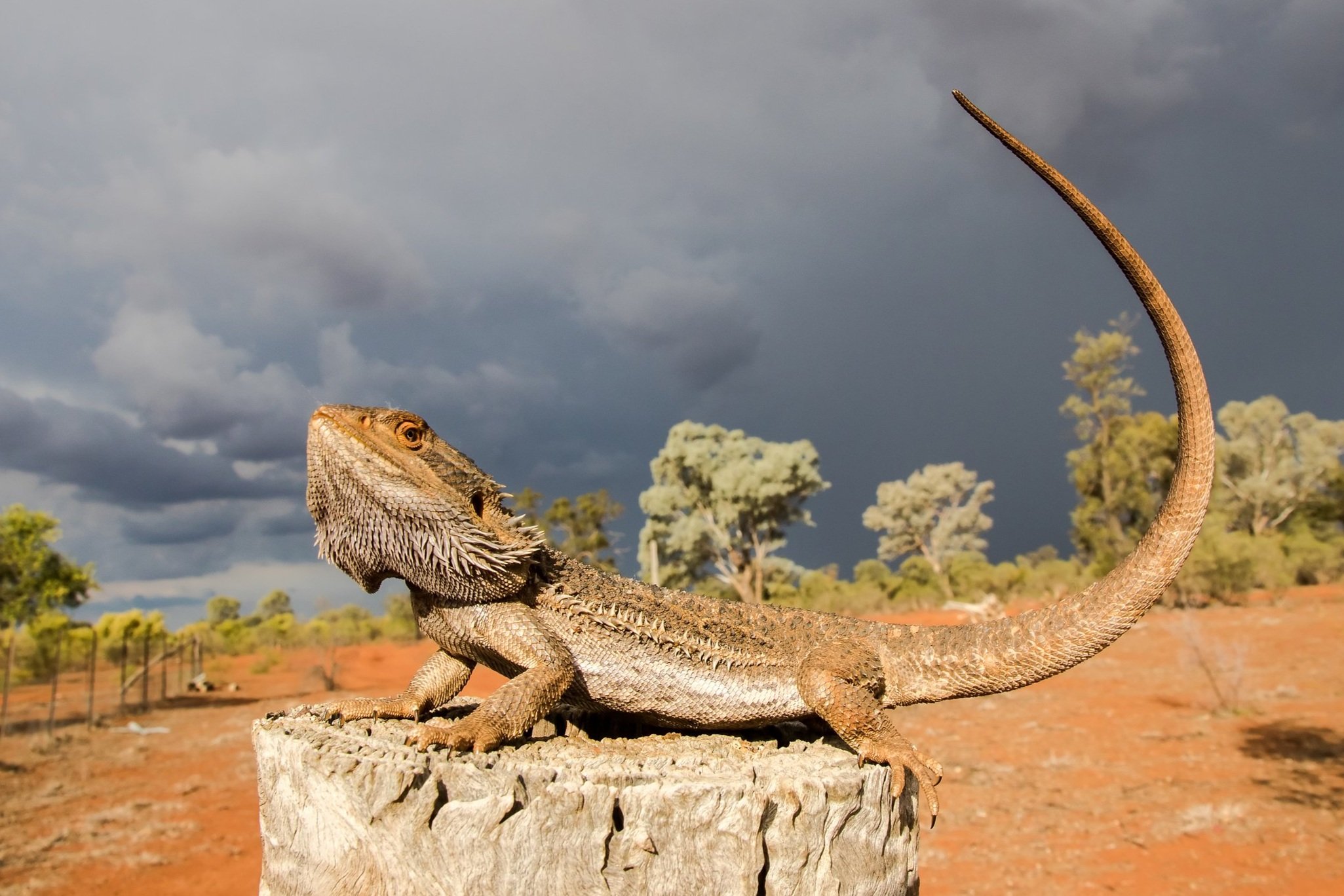
Temperatures and basking
Despite being kept in captivity for decades, even the most basic of requirements such as heating and ambient temperatures have room for improvement. Dr Howard suggests that much of the literature around keeping bearded dragons promotes basking temperatures far lower than the wild provides. He explained: “Temperature wise, bearded dragons in captivity have monophasic basking habits. But that’s because people aren’t keeping them hot enough. In the wild, bearded dragons have biphasic basking patterns, usually only basking in the morning and in the evening to get their temperature up.”
“We used an infrared thermometer, directly onto basking dragons, to measure their optimum basking temperature and that was 42°C (108°F). A similar study was conducted 50 years ago by Judith Battam and guess what, we had exactly the same result. So, a 38°C (100°F) basking spot isn’t hot enough. We should be aiming for a 36°C (97°F) ambient temperature, but with a basking spot much hotter (40°C+ or 104°F+) so the beardie can warm itself up to its optimum temperature quickly instead of needing to wait there all day.”
“Plus, some male beardies in captivity can reach up to 800g. Whereas a 500g male in the wild would be considered huge! Unlike warm blooded animals, that extra weight in reptiles actually prevents them from warming up. This all adds to the issues of impaction, even with the right combination of UV and diet, without the correct temperature, the body can’t convert it into D3. When it comes to tips, having that optimal temperature is number 1.”
The link between sunlight and impaction
In the wild, bearded dragons can spend long periods of time basking in direct sunlight. Naturally, they would absorb high levels of UVB whilst doing this, which many keepers in the 90s could not provide. Dr Jonathan Howard continued: “One thing people are concerned about is impaction. In my entire career I have only ever encountered 5 beardies that have suffered from impaction and all of these also had metabolic bone disease. In the US and Europe, sand impaction can be a problem, but we just don’t see it as often in Australia. The one major difference with how we keep beardies in Australia is we are always told to take our bearded dragons outside. Even in the middle of winter we can have a much higher UVI than much of Europe. By providing that UV, we help our bearded dragons convert calcium into D3.”
“A study on young bearded dragons saw that the individuals that were supplied with good UV actually preferred greens. So they weren’t going after the protein as much as the ones that were deficient in UV. This modified diet to meet insufficiencies, in the vet world is called ‘pika’. Although it hasn’t been officially proven, we think the bearded dragons are actually eating sand to try and get that extra calcium to help them create D3.”
Diet
Bearded dragons are omnivorous, and this diet should be replicated in captivity. Wild bearded dragons will typically feed on vegetation, invertebrates (which includes ants and beetles) and even other small lizards. Dr Jonathon Howard claims that misinformation and rumours around bearded dragons omnivorous diet is also causing problems. He claims: “One common rumour is that babies eat 90% insects. This isn’t true. Another study by Judith Badham dissected 60 beardies over the space of three years to look at their stomach contents. After looking at the water content of some of the insects, such as termites, we realise that the diet we tend to feed bearded dragons is wrong. We should aim to be feeding our beardies the following:
Young: 60% insects, 40% plant matter
Pregnant females: 30% insects, 70% plant matter
Adult males: 15% insects and 85% plant matter
However, a study by Mcmillan, conducted in the same area of New South Wales actually found that adult males were eating 90% vegetable matter, which lead him to label them herbivorous.”
“If people are feeding them too much protein it can lead to gout and other health problems. Also, people overfeeding youngsters can cause liver failure. They should remember reptiles have a metabolism 1/20th of a birds. The liver is also responsible for converting D3, so if that’s damaged, it can also contribute to impaction. Bearded dragons, especially adults, don’t need to be fed every day. I would say vegetable matter 3 times a week and insects maybe once or twice, that is the ideal diet.”
Luckily, there are many bearded dragon plant-based diets on the market now. Edible plants and seed grow kits offer the most natural option, with a wide variety of living plants for beardies to forage on throughout the year. By offering a diverse range of plants, captive bearded dragons will have access to the varied diet that is critical for optimum health. Feeding patterns can also be planned around seasons, enforcing a more natural diet structure.
Bearded dragons will drink out of a shallow water dish with no problems. However, these lizards have been observed to drink from directing rainwater to their mouth. An individual in an outdoor enclosure studied by the Australian Museum positioned itself to stand tall on its hind legs, with its head and tail sloping down. Water droplets were then directed towards the lizard’s mouth where it licked the moisture to drink. This way of drinking is not uncommon for desert species but offers fresh insight into how we replicate natural environments for bearded dragons.
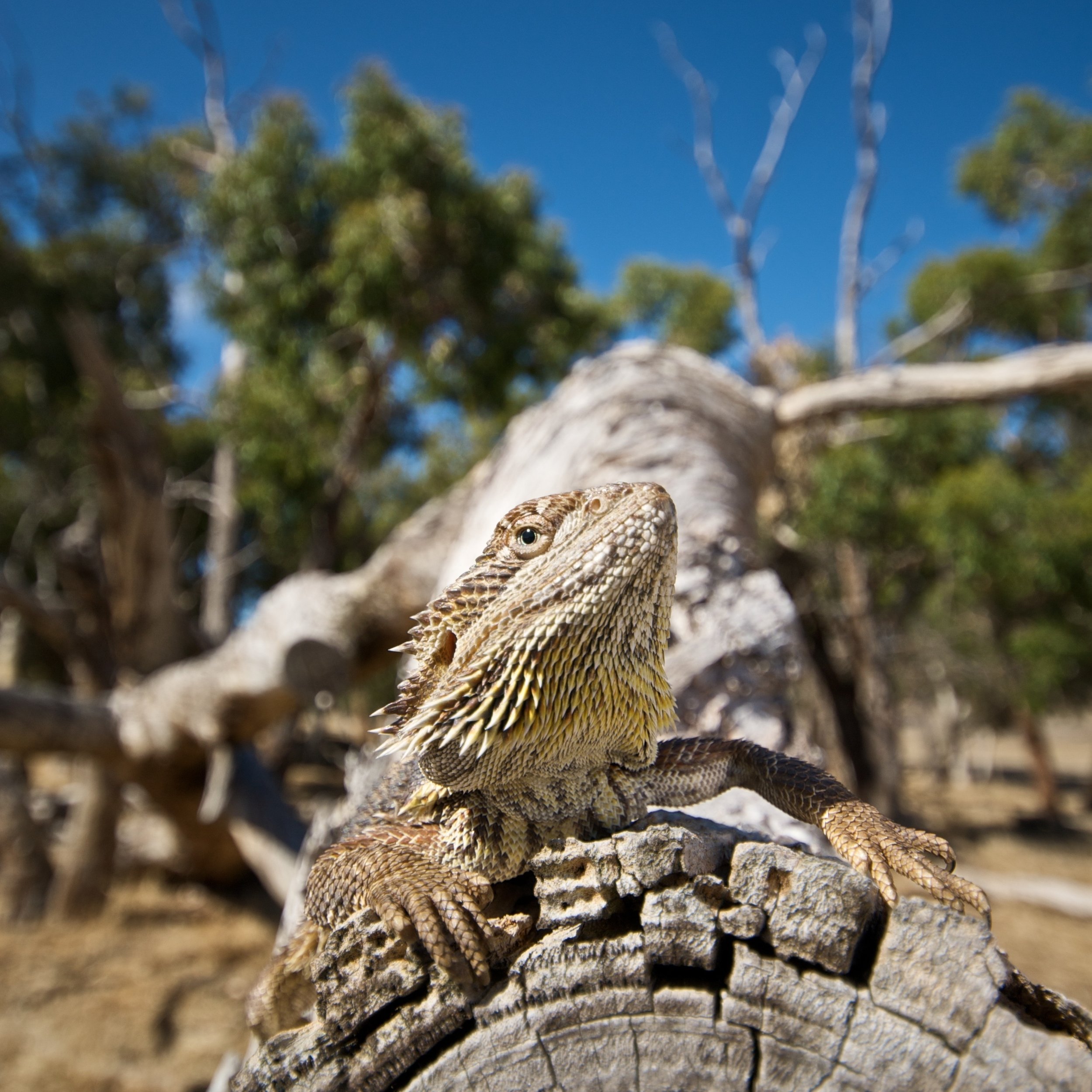
Parasites
Much of the misinformation around the diet of bearded dragons can be justified by the fact their bodies are terrible at breaking down much of the plant matter that they eat. Because of this they rely on complex bacteria and parasites to digest their food for them. Dr Howard explained: “People are always trying to wipe out parasites completely. But actually, pinworms are just normal microfauna. They have a symbiotic relationship with the bearded dragon and actually help them break down vegetable matter. They also help with the immune system and trying to wipe out all parasites is just like a human taking too many antibiotics all the time.”
Products designed to maintain a natural healthy gut are starting to appear on the market in the form of monthly supplements. Brands such as Verm-X use natural herbs to promote healthy digestion and while this is yet to be embraced as the industry standard (such as calcium powder and vitamins) it paints an interesting picture of the future of pet care as more people realise the importance of a healthy gut.
Lizard language
One of the major appeals of bearded dragons in captivity is their expressive personalities towards any prospective keepers entering the pet shop. Often seen waving and head bobbing at the front of the vivarium, bearded dragons can appear highly sociable for a reptile.
Interestingly, a friendly wave carries a similar meaning in lizard language. Arm waving signifies submission to other individuals, which could be likened to a friendly “hello”. Females will also wave to males to signify responsiveness to a potential mate which is often combined with a slow head bob.
Head bobbing and posturing generally signifies more aggressive intentions. Despite spending much of their time alone in the wild, the best basking spots can bring many lizards to the same location. The higher branches are occupied by the most dominant males. Although head bobbing is used by different animals for different reasons, males tend to head bob to assert dominance. A low bow is used by females to express submission to a dominant male. Before mating, the male bearded dragon can often be seen to frantically bob with his entire body, potentially signalling excitement.
In captivity, understanding the lizard’s language can help us gauge the best way to keep our animals happy. Dr Howard continued: “With body language, the males will often gesture during breeding season whether anyone is there or not. When it comes to breeding, the female will actually approach the dominant male and promote a dominance ride. Males do this too, but instead of mating the dominant male will bite and continue to push and bite. In the wild this can escalate, but the loser can escape. This can’t happen in an enclosed environment. I would avoid cohabiting bearded dragons unless it’s for breeding purposes”
Venom
In 2005, researchers at The University of Melbourne, led by Bryan Fry, discovered that the Eastern bearded dragon (P. barbata) still possess ancient venom glands. Bryan writes “Pogona barbata retains characteristics of the ancestral venom system, namely serial, lobular non-compound venom-secreting glands on both the upper and lower jaw”. Moreover, their research suggested that a huge spectrum of lizards, including monitors (Varanidae) and iguanas (Iguanidae) produce some form of active venom. Entirely harmless to humans, the remnants of ancestral venom producing organs is thought to have assisted in hunting prey.
Third eye
Bearded dragons, like many species of reptile and amphibian have a ‘third eye’. Known as the pineal or parietal eye, this photosensitive organ is located on the top of the dragons head and triggers hormone production and thermoregulation. Although the organ has a rudimentary lens and retina (of sorts), it cannot process vision. However, this presence of a parietal eye suggests that keepers should never use white light in the enclosure at night. It also explains why some bearded dragons will quickly dash into cover if they are being picked up from above.
Colouration
Colouration varies drastically between bearded dragons. Species, locales, temperature and even mood can contribute to one bearded dragon looking entirely different to the next. P. vitticeps can also partition colour change, meaning they adjust their colour on separate parts of the body. A 2016 study proved that the central bearded dragon can adjust the colour of their back to maintain their optimum body temperature, whilst simultaneously adjusting the colour of their ‘beard’ to exhibit social cues.
In outback Australia, the environment can change drastically across a very short distance. Despite the imagery of red sand and dead trees, the arid and semi-arid environments that bearded dragons inhabit are rich and diverse. The sand in these locations can change from a light beige to a deep red in the space of a mile. This diversity in locales contributes to the vibrant herpetoculture morph breeding scene which recognises countless colour and pattern variations.
What next?
As further field research develops and platforms such as Beardie Vet make this more accessible than ever, we should expect to see husbandry standards increase across the world. Breakthroughs in product development are also bringing important UV lighting and naturalistic substrates to the industry making this professional husbandry more achievable than ever. Dr Jonathon Howard concluded: “We are in the golden age of reptile keeping now. In the 90s we didn’t know these things. Although there’s always more to learn, we know the basics and we know what’s needed for good husbandry.”
